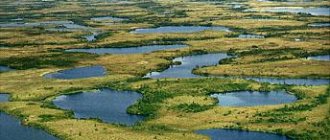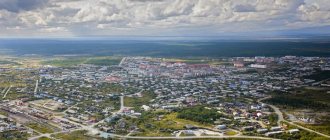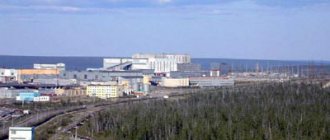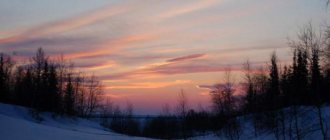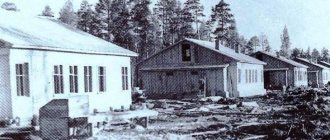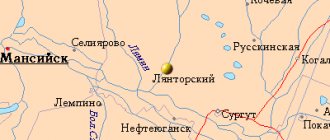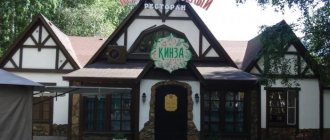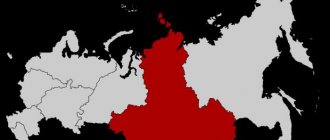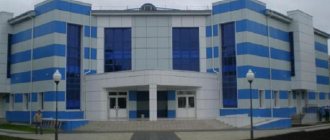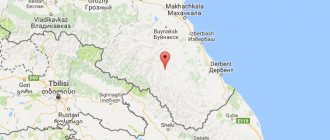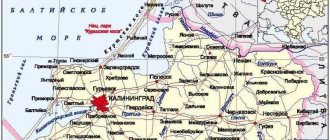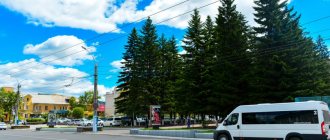The harsh northern region is beautiful and distant. These definitions fully apply to the Yamalo-Nenets Autonomous Okrug. On this land, surrounded by pristine nature, indigenous peoples live according to the customs of their ancestors, and the rich mineral resources are developed using modern technologies. Yamal has always attracted travelers with its unique appearance. Here, the stinginess of the sun and the originality of nature, the severity of the climate and the hospitality of the local residents, the fantastic palette of autumn and the silent whiteness of winter are combined in the most amazing way. Scientists love Yamal for its cultural richness and unique nature. Therefore, be sure to come to the Yamalo-Nenets Autonomous Okrug (capital Salekhard) to enjoy the cleanest air and see more closely the beauty of remote corners of our big country.
What holiday is it today?
February 10, 2022, Thursday
Today are holidays, events: Diplomat's Day Tomorrow: World Sick Day Discovery of insulin
Today is the Orthodox holiday: St. Ephraim the Syrian. Venerable Ephraim of Novotorzhsky. Venerable Ephraim of Pechersk, Bishop of Pereyaslavl. Venerable Theodosius of Totem, Spasosumorin of the monastery, leader and founder... Tomorrow: Transfer of the relics of the holy martyr Ignatius the God-Bearer. Saints Gerasim, Pitirim, Jonah, bishops of Great Perm, Ustva...
Today is a national holiday: Ephraim's Day... Tomorrow: Lawrence's Day
Seasons
Seasons, four periods of the year (spring, summer, autumn and winter) characterized by certain average temperatures. The period during which the Sun passes through one of these sectors is called the season. Spring in the Northern Hemisphere and autumn in the Southern Hemisphere begin when the Sun passes through the initial circle of declination and its right ascension is 0° (vernal equinox). Summer in the Northern Hemisphere and winter in the Southern Hemisphere occur when the sun's right ascension is 90° (summer solstice). Autumn in the Northern Hemisphere and spring in the Southern Hemisphere begin when the sun's right ascension is 180° (autumnal equinox). The beginning of winter in the Northern Hemisphere and summer in the Southern Hemisphere is considered to be the winter solstice, when the direct ascension of the Sun is 270°... Next: Seasons. Russian folk calendar. Monthly words...
Folk calendar about every day
Every day one season always replaces another and this determines a person’s way of life. In connection with this, a folk calendar was formed in which there were practically no nameless, unmarked days. Every day was special, had its own purpose. All this was determined by climate conditions and astrological phenomena.
A calendar is a system for counting periods of time. The first calendars arose a long time ago, in ancient times, because there was a need to measure time. The word calendar comes from the Latin words caleo - to proclaim and calendarium - debt book. This is due to the fact that in Ancient Rome the beginning of each month was especially proclaimed, and because it was customary to pay debts on the first day of the month. Different peoples counted time differently. Some calendars are based on the changing phases of the moon - lunar calendars; in others - the change of seasons - sunny; in others, the length of the year was coordinated with the change of seasons, and the counting of months was associated with the phases of the Moon. Such calendars are called lunisolar.
In Rus', the calendar was called a monthly calendar. Every day, the month book covered the entire year of peasant life, “describing” day by day, month after month, where each day had its own holidays or weekdays, customs and superstitions, traditions and rituals, natural signs and phenomena. The cyclical nature of the calendar is reminiscent of human life, where spring is youth, summer is heyday, autumn is the time of harvesting fruits (it’s good if there are some, otherwise you can live your life without collecting fruits), winter is the time of wisdom and peace. This cyclicality and rhythm determined the way of life of the farmer. The folk calendar was an agricultural calendar, which was reflected in the names of the months, folk signs, rituals and customs. Even the determination of the timing and duration of the seasons is associated with real climatic conditions. Hence the discrepancy between the names of the months in different areas... Next: Folk calendar...
Administrative center
The capital of the Yamal-Nenets Autonomous Okrug is the city of Salekhard. It was located on the bank of the Ob (on the right side). The city is located on the Arctic Circle (the only one in the world). The population is about 40 thousand people. The city was founded in 1595. At first it was a small fort called Obdorsky. Half a century after its founding, permanent residents appear here. Since 1923, the village of Obdorsk has become the center of the Obdorsky district of the Ural region. And already in 1930, the village was given the status of the administrative center of the Yamalo-Nenets Autonomous Okrug. Three years later, Obdorsk was renamed Salekhard. Nowadays, the Yamalo-Nenets Autonomous Okrug, the capital of the Autonomous Okrug in particular, is developing at a fairly rapid pace. There are many enterprises in the city: Yamalzoloto, a river port, a fish canning factory and others. The Yamal-Nenets District Museum and Exhibition Complex has been opened in the city, which houses an exhibition center, a local history museum and a scientific library. Also in Salekhard is the District House of Crafts, a state budgetary cultural institution of the Yamalo-Nenets Autonomous Okrug. There are many branches of various universities in the capital of the Yamal-Nenets Autonomous Okrug. It should be noted that the Yamalo-Nenets Autonomous Okrug (capital Salekhard) is experiencing great problems with Internet access. The fact is that there is no fiber optic network in the region yet.
Fishing calendar for every day
The fishing calendar should not be taken as an absolutely indisputable truth. Fish biting is greatly influenced by a whole range of natural factors, as well as the influence on the nature of man himself. You must not forget that the fish’s bite depends and is determined not only by the calendar dates and biological cycles of their life, reflected in the calendar, but also, no less, by the state of their habitat; the bite also depends on weather conditions: air and water temperatures, cloudiness, wind direction and strength, etc... Next: Fishing calendar...
Mineral natural resources
The Yamalo-Nenets Autonomous Okrug (capital Salekhard) is famous for its hydrocarbon reserves. About 78% of the total reserves of Russian oil and gas are concentrated here. The Yamal-Nenets Autonomous Okrug is the world's largest hydrocarbon resource base. Developments for the extraction of valuable raw materials are being carried out at the Nakhodka and Urengoy gas fields, Ety-Purovskoye, Yuzhno-Russkoye, Yamburgskoye oil fields. In the Yamal-Nenets Autonomous Okrug, about 8% of the total production of “black” and about 80% of “blue gold” is produced annually. In the Polar Urals, chromium, molybdenum, tin, iron, lead, phosphorites, barites and other minerals are mined.
Orthodox calendar about every day
Orthodox calendar: Orthodox, Church and Christian holidays.
The church year is an alternation of weekdays and holidays. On weekdays, a person is called to work “by the sweat of his brow to earn his bread.” Holidays are given in order to feel liberation, to rise above the bustle and routine of the world, to feel involved in the highest of worlds, “where there are no illnesses, sorrows and sighs, but endless life.” Since ancient times, holiday cycles have been associated with the seasons. The pagans associated them with the worship of the forces of nature, the cult of which in the Old Testament was replaced by gratitude to the Creator for the universe. And although the connection between holidays and the seasons has not completely lost its power, since God is present in everything, in the plant and animal world, in human works, it nevertheless faded into the background, giving way to a spiritual foundation built on the Sacred Scriptures. The history of Orthodox holidays dates back to the times of the Old Testament. Each of the Orthodox holidays is dedicated to the remembrance of the most important events in the life of Jesus Christ and the Mother of God, as well as the memory of saints... Next: Orthodox calendar...
Russian folk calendar for every day
The word “sign” comes from the word “notice”, i.e. observe. As a result of observing what happens around a person every day, he accumulates life experience. This knowledge was passed down from generation to generation, carefully preserved and people trusted it as a sacred book. Many signs have come to us from the depths of centuries without losing their knowledge. Each of us is free to choose: to dismiss all this as an absurd superstition or to take a closer look at the signs and take the centuries-old experience of generations more seriously. Most of us, when taking exams, ask them to scold them, boasting about some kind of good fortune or luck, spit so as not to jinx them or knock on wood, take a detour if a black cat crossed the road, are afraid of the number 13 and much more. And who among us does not have lucky things, numbers? Who has never resorted to the help of fate at least once in their life, who has not believed in secrets? It’s as if everything connected with signs is hidden somewhere deep in our subconscious. Often we remember them mechanically, unconsciously, or just as a joke. But, undoubtedly, the signs contain a lot of accurate knowledge and practical wisdom of our ancestors. They cover all the characteristic, often difficult to perceive, natural phenomena. Signs have preserved a lot of what was in old folk holidays and customs; they help predict the weather, grow crops... Next: Folk signs...
General information about the Yamalo-Nenets Autonomous Okrug
Distinctive features .
The words of Marina Khlebnikova’s song are well suited to the Yamalo-Nenets Okrug: The cold weather warms you up and beckons you with the warmth of home
You buy me a palace, and I'll go back again
And the white, white snow will make me feel good
Indeed, despite the long winter, snow and frost, there is a lot of pleasant things in the life of the residents of the Yamal-Nenets Autonomous Okrug. This is northern romance, high salaries, good social protection, low levels of environmental pollution, and a relatively low level of crime. It is not for nothing that in 2013 Novy Urengoy became second, and Noyabrsk became 13th in our ranking of Russian cities most suitable for living.
Stella "Arctic Circle" in Salekhard. Photo by tanihiola (https://fotki.yandex.ru/users/tanihiola/)
Serious development of the lands of the Yamalo-Nenets Autonomous Okrug began in the late 60s of the last century. In a matter of years, modern cities with developed infrastructure grew here, where stern but romantic people lived. Thanks to gas production in the north and oil production in the south of the district, as well as highways transporting gas and oil, it has become one of the most economically developed regions of Russia.
In addition to workers on gas and oil rigs, scientists also come here. The indigenous population - the Nenets (Samoyeds) - are a very interesting people, with their own culture, customs, and beliefs. Historical and local history museums operate in the cities, documentaries are made about the peoples of the North, and their spiritual leaders-shamans, bearers of the wisdom of past generations of these peoples. Despite the nearby cities with the benefits of 21st century civilization, many tribes continue to live like their ancestors a hundred or two hundred years ago: they lead a nomadic lifestyle, hunting, fishing and breeding deer.
Raw reindeer meat is a common food for the Nenets
Geographical location . The Yamalo-Nenets Autonomous Okrug is located in the north of the West Siberian Plain and is part of the Ural Federal District. The northern coast of the district is washed by the waters of the Kara Sea. On the map of the Yamal-Nenets Autonomous Okrug, the Yamal Peninsula especially stands out, the entire eastern coast of which is washed by one of the largest bays of the Arctic - the Gulf of Ob, with a length of about 800 km.
Ob Bay
The neighbors of the district are: in the east - the Krasnoyarsk Territory, in the south - the Khanty-Mansiysk Autonomous Okrug, in the west - the Komi Republic and the Nenets Autonomous Okrug of the Arkhangelsk Region. Most of the Yamal-Nenets Autonomous Okrug is located beyond the Arctic Circle. The entire territory of the district belongs to the regions of the Far North.
The largest river in the Yamal-Nenets Autonomous Okrug is the Ob. Other large rivers are Nadym and Taz. The landscape of the district is quite diverse. In the west these are the eastern slopes of the Ural ridge, in the north there is tundra, turning into forest-tundra as you move to the south.
The population of the Yamalo-Nenets District is 541.6 thousand people. 70% of them are people of working age. The region is characterized by very high fertility and low mortality. Natural population growth +11.4 people. per 1000 inhabitants.
Nadym: “And it’s better on deer!” Photo by dim.kapishev (https://fotki.yandex.ru/users/dim-kapishev/)
Russians make up 60% of the district's population. In second place are Ukrainians (9.37%), in third are Nenets (5.89%). The population is constantly growing due to migrants who come here in search of well-paid work. Meanwhile, others, who have already earned enough money, leave the Yamal-Nenets Autonomous Okrug, moving to the south - to Tyumen or Moscow / St. Petersburg. It is not for nothing that Yamal is called the Russian Klondike - people come here in search of good luck, and those who are lucky return back in triumph.
Crime . The Yamalo-Nenets Autonomous Okrug is in 28th place in the ranking of regions in terms of crime levels. Of course, big money also attracts criminals of all stripes, especially organized crime groups. No wonder they decided to make Novy Urengoy a closed city. Among other problems, it is worth noting drug trafficking. It is especially developed here, and the level of drug addiction in northern cities is very high.
The unemployment rate in the Yamalo-Nenets Autonomous Okrug is one of the lowest - 0.58%. And the average salary is one of the highest (RUB 63,132). But even here, the distribution of salaries across industries is uneven. There are also those where this value is below 20 thousand rubles per month. And the highest salaries in the Yamal-Nenets Autonomous Okrug are in the field of extraction of fuel and energy minerals (who would doubt it!) - 93 thousand rubles. and in the production of petroleum products - 92 thousand rubles. per month.
The cost of real estate in the Yamal-Nenets Autonomous Okrug is one of the highest in Russia. At least in Novy Urengoy it is 103 thousand rubles per sq. m. meter. To buy the simplest one-room apartment here, you need to shell out at least 4 million rubles. In the suburbs of the city, prices are much lower - about 1.8 million rubles. Two-room apartments in the city are much more expensive: 5.6 - 9 million rubles, three-room apartments 7 - 12 million rubles.
The climate of the Yamalo-Nenets Autonomous Okrug is harsh, sharply continental. Cold Arctic air masses from the north easily come here, but humid air masses from the Atlantic and Pacific Oceans practically do not reach here. The average January temperature is −20°C, but frosts reach −30°C and even −50°C. Summer here is short - 50 days, but temperatures can reach +30°C. The amount of precipitation in summer is 140...150 mm. Thanks to the dry climate, frosts are tolerated much more easily here, which cannot be said about the heat.
Holiday calendar, dates and events of the year
All state and professional holidays in Russia, including significant World and International holidays, and other equally interesting holidays and events about every day.
The holiday has always kept pace with the history of mankind. Social time can be divided into three types: everyday life (weekdays), weekends and holidays. Everyday life is a series of practices repeated day after day and every day (work). Weekends are regular breaks from the rush of everyday life. It is believed that on weekends a person should restore his strength after working days. Day off, non-working day. A holiday is a day of celebration established in honor or in memory of someone or something. A day or series of days celebrated by the church in memory of a religious event or saint... Next: Calendar...
Prayer book, Orthodox prayers for every day
Prayer is the most powerful means for healing all illnesses - both physical and mental. Prayers can be laudatory or grateful, petitionary and repentant. If we have offended God, sinned, we must ask Him for forgiveness, that is, repent. Such prayers are called repentant prayers. If everything is fine with us, if we and our loved ones are healthy and prosperous, if we have a place to live, something to wear, something to eat, we must glorify and thank God for this. Such prayers are called praise or thanksgiving. If some misfortune, illness, trouble or need happens, you need to ask God for help. Such prayers are called petitionary... Next: Orthodox prayers...
Zodiac, astrological, eastern calendar. Zodiac signs
In ancient times, to establish the calendar, priests used knowledge of the positions of all the planets. Before the reform of Peter 1, the New Year was celebrated on the Day of the Autumn Equinox. On this day, according to ancient legend, the most peaceful treaty was concluded between the Great Race (ancient Slavs) and the Great Dragon (ancient Chinese) and it was approximately 7518 years ago... For the ancient Slavs, the calendar month corresponded to the lunar cycle from new moon to new moon, taking into account such Thus, the relationship of the entire annual cycle with astronomical and natural phenomena. There was no coherent calendar system. The main natural phenomena are still considered to this day to be the days of the solar equinox and solstice - the Slavic holidays Maslenitsa, Kupala, Ovsen and Kolyada. But during the time of Peter 1, all ancient Slavic calendars were abolished and a new Western European calendar from the Nativity of Christ (Julian calendar) was introduced, while the beginning of the calendar was moved to January 1. The Julian calendar (old style) did not take leap days into account and accumulated one extra day every 128 years. After the October Revolution in 1918, the Gregorian calendar (new style) was introduced in Russia, according to which an amendment of 13 days was introduced. The calendar of the ancient Slavs was based on two planets: the Sun and the Moon. And now they don’t use anything at all. The calendar has become static. There is no such thing as the calendar, it turns out, resting on some planet. Nobody even knows about it. There are just some standard numbers, there are months and holidays. The calendar is based on the Sun and Moon. Why is this so? Because these two luminaries influence the Earth. The Earth revolves around the Sun, and the Moon revolves around the Earth. And these two luminaries create the atmosphere on the planet. From here the calendar is built... Next: Astrological calendar...
Gubkinsky
The city of Gubkinsky (Yamalo-Nenets Autonomous Okrug) became a city of district significance in 1996 and was named after the Soviet geologist Ivan Mikhailovich Gubkin. It is located on the left bank of the Pyakupur River, two hundred kilometers from the Arctic Circle. This city was formed as a base center for the development of oil deposits. Therefore, Gubkinsky (Yamalo-Nenets Autonomous Okrug) mainly specializes in the oil and gas production and processing industries. The city does a good job of working with young people: there are sports and cultural centers, a dance school, and a recording studio. Young people have the opportunity to get an education in their hometown.
Dream books online, interpretation of dreams
A dream book is nothing more than an interpreter of dreams and dreams, a translator of dreams. Since ancient times, people have been using dream books; dreams have always been given great importance, and people have often noticed the prophetic properties of some dreams. The dream book can become your faithful assistant every day and throughout your life, thanks to the dream interpreter you can always make the right decisions, the dream book will help you resist temptations in time, and will warn you against wrong steps and frivolous actions. Further…
Cities and districts of the Yamalo-Nenets District
The Yamal-Nenets Autonomous Okrug consists of seven districts, eight cities, five urban-type settlements and forty-one rural administrations. Districts of the Yamalo-Nenets Autonomous Okrug: Yamalsky, Shuryshkarsky, Tazovsky, Purovsky, Priuralsky, Nadymsky and Krasnoselkupsky. As mentioned above, the population density is very low. Despite the vast territory, there are very few cities in the Yamalo-Nenets Autonomous Okrug. Cities: Noyabrsk (97 thousand), Novy Urengoy (89.8 thousand), Nadym (45.2 thousand), Muravlenko (36.4 thousand), Salekhard (32.9 thousand), Labytnangi (26, 7 thousand), Gubkinsky (21.1 thousand inhabitants). Some cities of the Yamal-Nenets Autonomous Okrug will be described in more detail below.
